The best current superhero team book doesn’t have a feature film in the works or a critically acclaimed animated cartoon. It’s not called the Avengers, X-Men, Fantastic Four, Teen Titans, or the Justice League of America. It’s Ultimates (not the Mark Millar/Bryan Hitch series where Captain America asks if the “A on his forehead stands for France”). The comic is written by Marvel Comics rising star Al Ewing (Loki, Agent of Asgard) with epic, trippy art from Kenneth Rocafort (Teen Titans), Christian Ward (Ody-C) and Djibril Morrisette (Zack the Zombie Exterminator), plus gorgeous colors from Dan Brown (Wolverine MAX).
The basic premise of Ultimates is that Captain Marvel (Carol Danvers) and Black Panther have put together a team of scientific geniuses and heavy hitters to deal with universe threatening events before they even occur. They are a “proactive” superhero team. The other team members are Monica Rambeau, who goes by the codename Spectrum and can turn into pure light; Ms. America, who can punch through dimensions; and Blue Marvel, an 80 year old African-American “super scientist,” who can create anti-matter with his hands but prefers non-violent methods to solving problems. It’s the most diverse superhero team lineup of any current Big Two book; there are no white men on the team, and the Ultimates lineup features a white woman (Captain Marvel), a lesbian Latina woman (Ms. America), an African American woman (Spectrum), an African American man (Blue Marvel), and an African man (Black Panther). They are also assisted by the new Giant-Man, Raz Malhotra, who is either Indian or Pakistani.
Ultimates is living proof that having diverse characters in a book doesn’t mean the comic has to be an after school special, but can simply be a sci-fi/superhero book where the protagonists’ different backgrounds facilitate a lively and unique adventure story. Here are some more specific reasons why Ultimates should be number one on your pull list.
- Kenneth Rocafort’s Double Page Spreads
With some artists, double page spreads or splash pages are just glorified pinups and don’t add much to the story. However, Kenneth Rocafort’s work is the exact opposite beginning with a spread in Ultimates #1 where Blue Marvel shows Captain Marvel Iso-8, which is pretty much the building blocks of reality. (It’s also a crucial item in the occasionally addictive Facebook game Avengers Alliance.) The art is trippy, and colorist Dan Brown’s swirl of blues, reds, and purples are maybe a little mind expanding just like the concept that Blue Marvel is explaining to the team and sets the tone for the series.
Rocafort also uses the double page spreads to help with characterization, like the one that opens up Ultimates #2 (above) where Black Panther is being directly teleported from Wakanda to Galactus’ current home base. And this teleport isn’t just a happy “Beam me up Scotty” situation, but the atoms in his body are being ripped apart and relocated while he’s in transit. This causes him to hallucinate and be faced with the disapproval of his dead father while in space. In the space of two pages, we see the pressure that Black Panther is under as the monarch of Wakanda as well as the protector of Earth that will inform his decisions in the comic.
- Ewing Does Something Original with Galactus
Even though he was relegated to a cloud of gas in Fantastic Four: Rise of the Silver Surfer, Galactus is one of Marvel’s villainous heavy hitters. And he’s not really a bad guy in a moral sense, but more of a force of nature. Galactus is hungry, and the only thing that happens to satisfy his hunger is whole planets and their inhabitants. He is the bad guy you call on when you want to turn your superhero story into a full blown disaster movie in comic book form.
Ultimates breaks the mold and switches up his character. The moment that probably got me hooked on the series is when the team used their combined energy powers and the incubator that Galactus slept in when he was born to transform the Devourer into the Lifebringer. Instead of eating planets, he rebuilds them, beginning with the first planet he devoured. The Ultimates, with the help of their superpowers, scientific know how, and compassion turned one of the most destructive forces in the Marvel Universe into a force for good. Plus he’s gold and shiny instead of purple.
- It Gets Meta About the Static Nature of Superhero Comics
If you only have time to read one issue of Ultimates, let it be #6. It’s a standalone story told from the perspective of Galactus featuring guest art from Christian Ward. As Galactus struggles with the personifications of Chaos and Order, he is actually struggling with superhero comics and their unchanging nature.
I think that Chaos symbolizes gimmick-driven storytelling in superhero comics, like making Steve Rogers an agent of HYDRA, and Order represents a slavish adherence to continuity and the status quo, like the fanboys who were mad that Thor is female or even that Peter Parker is still unmarried. Even though these ideas are technically opposed to each other, Galactus says they are both “narrow systems” and shows his displeasure by punching Order in the face. This punch represents the radical change to Galactus’ character, which supposedly is messing up the cosmic order (or comic book status quo).
Of course, he will probably go back to being purple and eating planets once Ewing is done writing Ultimates. No matter how many revolutionary changes a writer and artist make with a Marvel or DC character, there will always be other creators who retcon these developments away or pick and choose different characteristics of them for their story. Even if he is Jim Gordon or Dick Grayson for a while, Batman will constantly be fighting crime in Gotham, and Galactus will always be a powerful cosmic being even if he uses his powers to bring life or death depending on the story. It’s sad, but in the larger scheme of things, superhero comics don’t really change, and Galactus, Ewing, and Ward are well aware of that.
- Ms. America Punches Things and Has Emotions
As one of Marvel’s most prominent Latina and queer characters (who happens to have a huge cult following thanks to Young Avengers), it’s pretty sad that America Chavez doesn’t have a solo series. Thankfully, she gets a lot of panel time in Ultimates punching blue eldritch aliens, holes through dimensions, and even Captain Marvel when she decides to detain an innocent person who may have a black hole generator in her briefcase. (She doesn’t.)
But in the midst of all this punching, Ewing and Rocafort are deeply invested in Ms. America’s personal life and feelings. In Ultimates #5, she passes out while trying to get the team out of the Neutral Zone, an area outside space and time. This causes Ms. America to have a hallucination about her girlfriend Lisa, who tells her that it’s okay to be vulnerable and ask for help from her friends.
America’s relationship with Lisa comes into play later in Ultimates #8 after Thanos is defeated, but Rhodey is killed and She-Hulk is badly injured. America deals with her loss by sitting in a corner texting her girlfriend. Instead of using this as an opportunity to rag on millennials for being glued to their phones, Ewing has Spectrum realize that America isn’t isolating, but getting help from Lisa, who is an EMT and probably has had to deal with death that she thought she could prevent.
It’s a small, touching moment that shows that Ewing understands how some young people deal with grief. I might not want to have a long phone conversation, but a quick text to check and see if I’m okay works just fine. And it’s refreshing to see a character in a high concept superhero comic act the same way.
- Blue Marvel Has the Epic Monologues (and the Dad Jokes)
Of all the characters in Ultimates, Adam Brashear, or Blue Marvel, has the most robust arc. Blue Marvel is a study in contradictions. He is in his eighties, but is on the cutting edge of “super science.” He is a pacifist, but has the ability to project anti-matter from his hands and is a Korean War veteran. Blue Marvel doesn’t want Captain Marvel to use the Inhuman Ulysses to catch criminals before they’ve done anything wrong, but doesn’t oppose her because Ulysses’ abilities helped his daughter leave her lab before it was attacked by Thanos.
But, in addition to living firmly in a grey area, Blue Marvel is kind of the Doctor or Jean Luc Picard of the Ultimates and has a knack for grand, timely monologues. His best one comes in Ultimates #8 after Spectrum takes the blame for Rhodey’s death because she focused on strategy instead of just zapping Thanos with her light powers. Blue Marvel simply reminds Spectrum that despite their great power sets that they are both human beings, who make mistakes. And sometimes these mistakes have big time consequences, like the loss of a dear friend.
However, Blue Marvel isn’t just a monologue deliverer and a disher of technobabble. He has a sense of humor too, as evidenced by his painful attempts at “hip” slang like “dope” and “rad” in a flashback scene with his son Kevin, who is unfortunately trapped outside our dimension. He also has a running joke that if Giant-Man beats “Cthulhu”, he can join the Ultimates on a full time basis. He’s generally a delightful, if highly conflicted, fellow.
- Thanos Does Something Other Than Sit on his Butt
Just like the Marvel Cinematic Universe (eventually), the Big Bad of Ultimates is the purple-chinned Mad Titan, Thanos. But he plays a much more active role in Ultimates than in these Marvel movies where his butt is firmly planted on his throne. In Ultimates #7, he slaughters an entire Shi’ar warship in a stunning sequence from Kenneth Rocafort when he finds out they have access to a reality altering Cosmic Cube. Thanos has quite a few tricks up his sleeve, including telepathic abilities; Ewing writes Thanos like a skilled chess player, who isn’t afraid to make bold moves and sacrifice pieces. While the Ultimates argue about the whole Civil War II situation, he is poised to strike.
On a more personal note, Thanos has a new squeeze in Ultimates. He doesn’t hold a torch for Death any more, but Nothing, whatever or whoever that it is. Yeah, he’s a literal nihilist. I think he took a course on French existentialists during the gap between Secret Wars and Ultimates #5.
- The Existence of this Black Panther Panel
If you liked Black Panther in Captain America: Civil War, he’s even cooler in Ultimates. Honestly, don’t mess with T’Challa because he is a superhero, Ultimate, ambassador from Earth to alien species, and the embodiment of Wakanda, the most scientifically advanced country in the Marvel Universe. (Their space program is light years ahead of the NASA, and actually gets funding.) He doesn’t speak much in Ultimates, but you should pay attention every time he opens his royal mouth.
Ultimates is the best current superhero team book because it grapples with big ideas (like whether it is better to lie or tell someone a hard truth, the cyclical nature of stories, and criminal profiling) while also treating its main characters like human beings with hopes, fears, and unique senses of humor. Ewing captures the perfect combination of Jonathan Hickman’s exploration of big ideas through Marvel superheroes and Kieron Gillen’s exploration of the human side of divine characters. Rocafort and Brown are the true heirs of mind-expanding artists like Jack Kirby and Jim Starlin.
Science fiction, punching, moral & philosophical dilemmas and a diverse cast of characters; Ultimates has it all, and you can catch up on the series now on Comixology.
Images via Marvel Comics
Want more stories like this? Become a subscriber and support the site!
Logan is a nerdy bisexual ginger, who is a grad student and freelance pop culture writer in Hunter S. Thompson’s hometown of Louisville, Kentucky. He loves comics, music (especially New Wave and BritPop), film (especially Quentin Tarantino and Edgar Wright), sports (college football and NBA), TV, mythology, and poetry. Joss Whedon is his master, Kitty Pryde is his favorite superhero, and his current favorite comic is The Wicked + the Divine. Follow him at @MidnighterBae and Graphic Policy.
—The Mary Sue has a strict comment policy that forbids, but is not limited to, personal insults toward anyone, hate speech, and trolling.—
Follow The Mary Sue on Twitter, Facebook, Tumblr, Pinterest, & Google+.



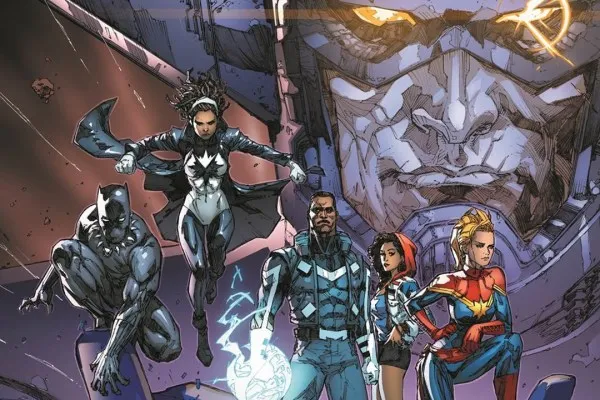
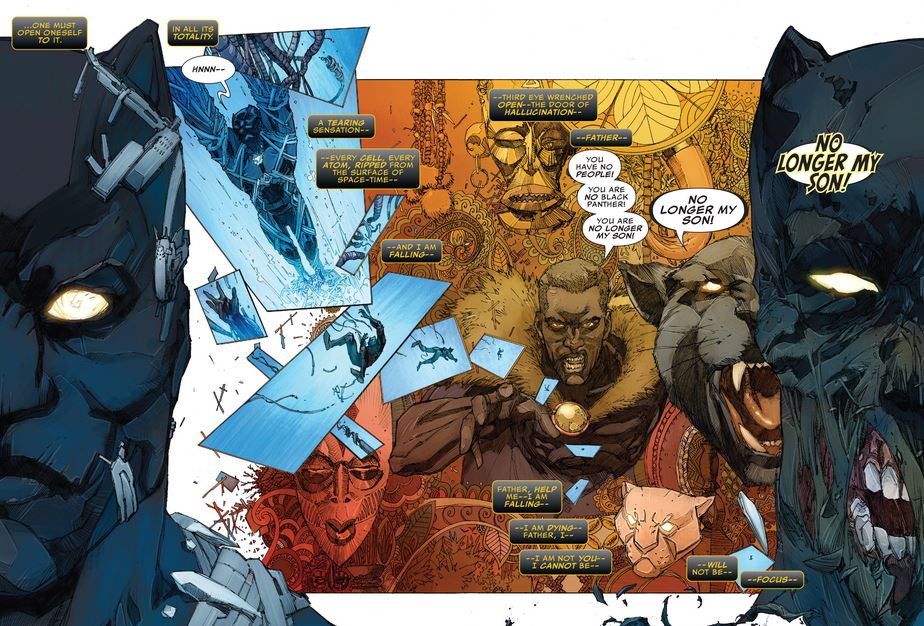
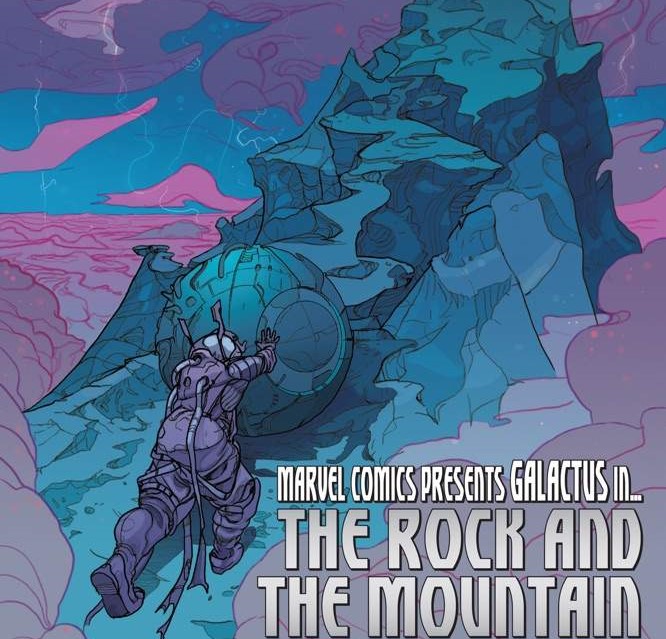
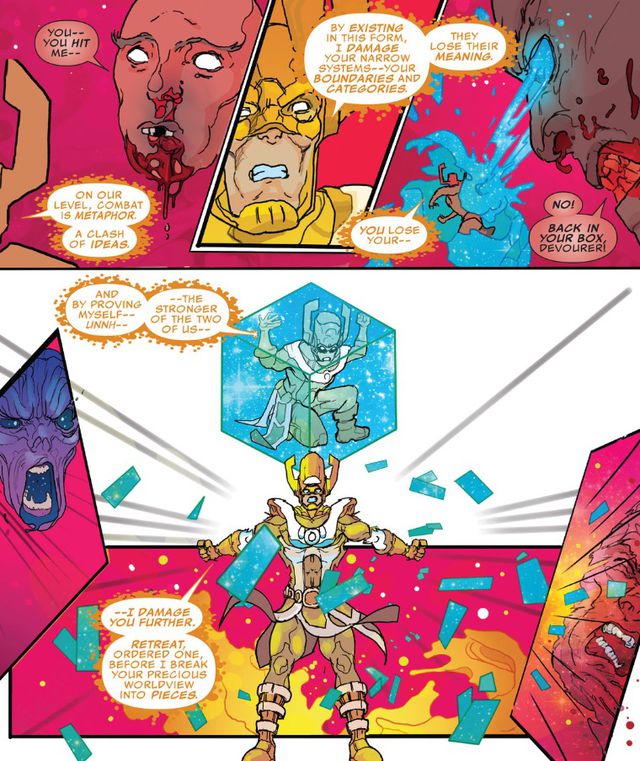
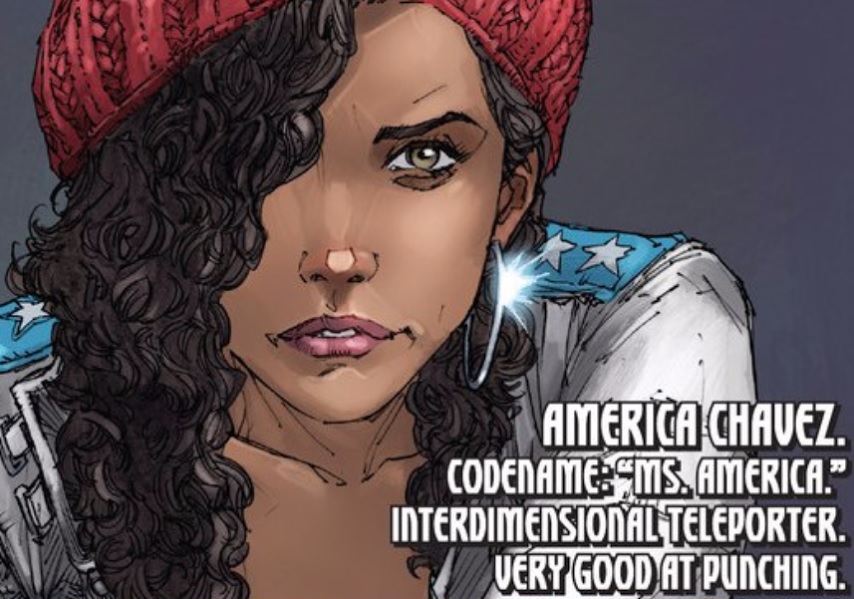
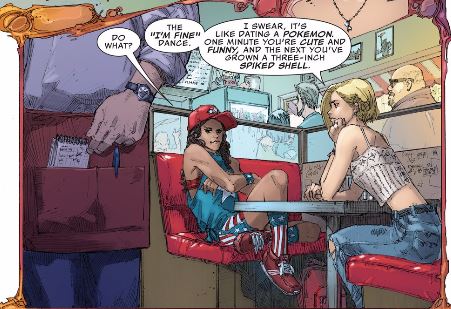
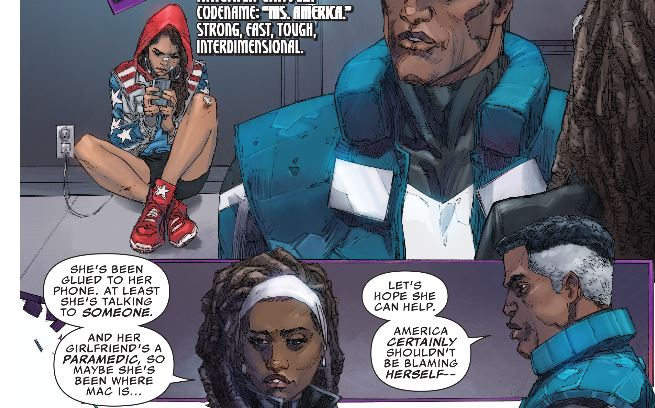
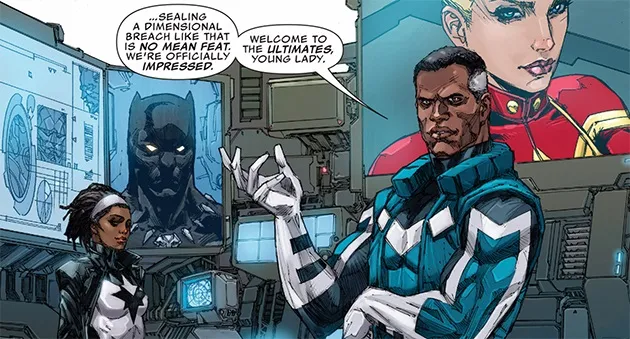
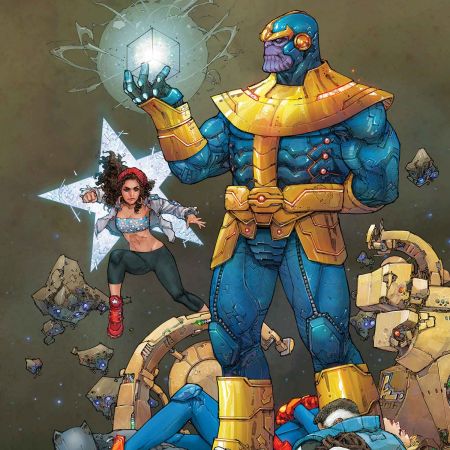
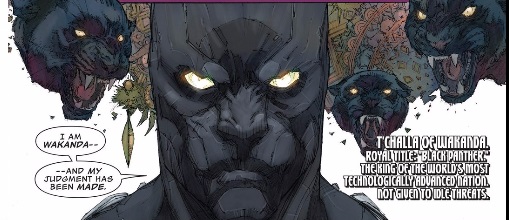





Published: Sep 14, 2016 12:57 pm